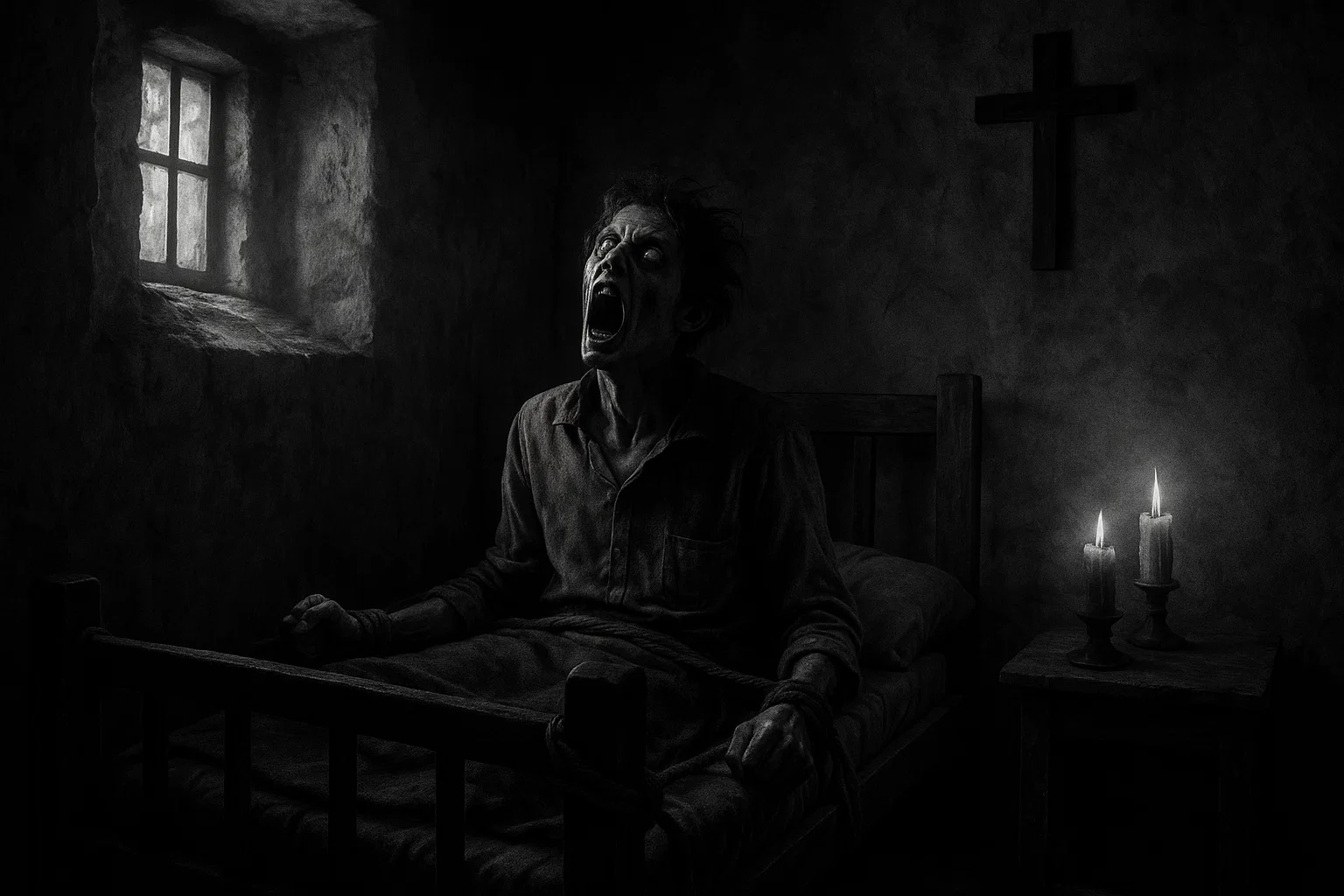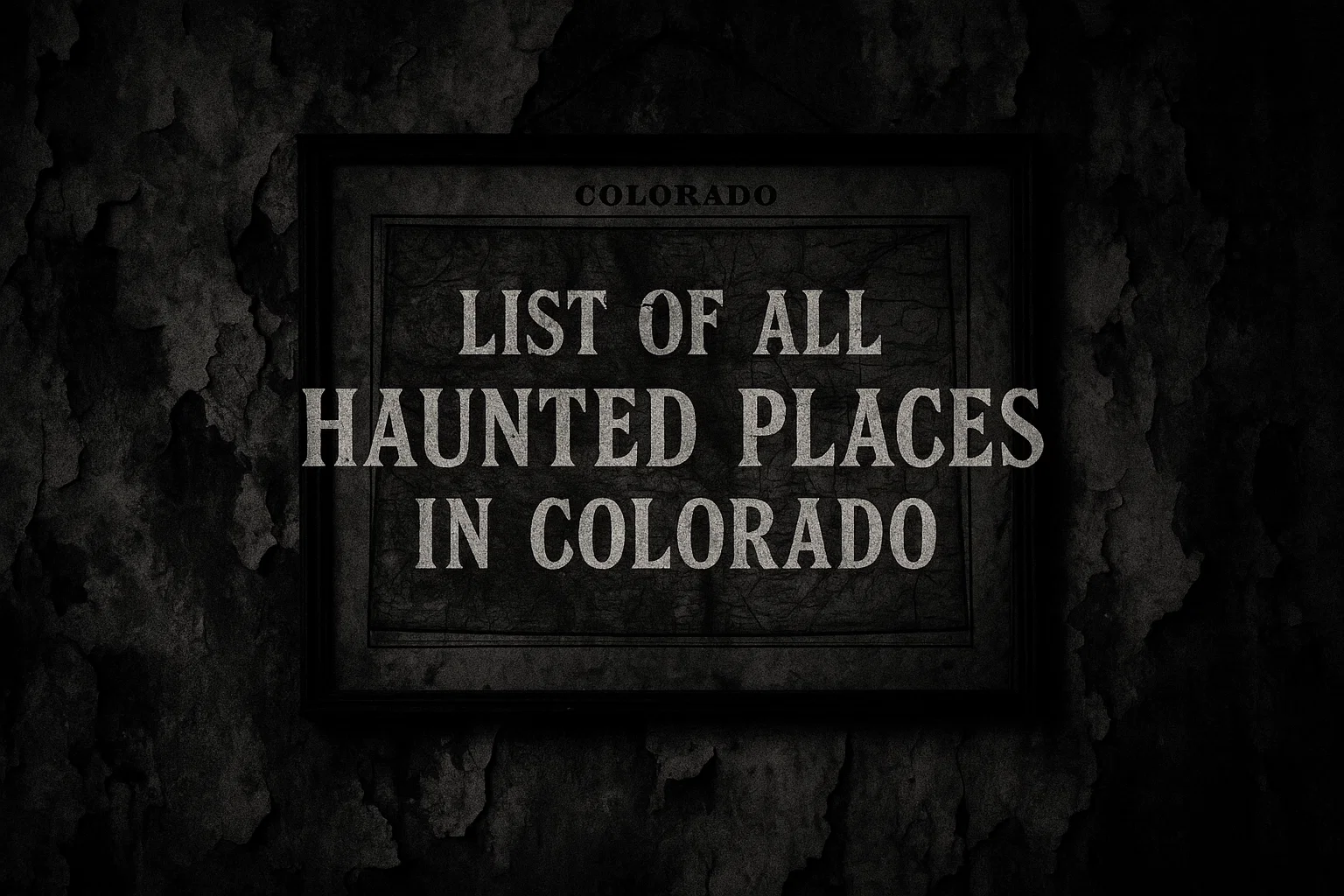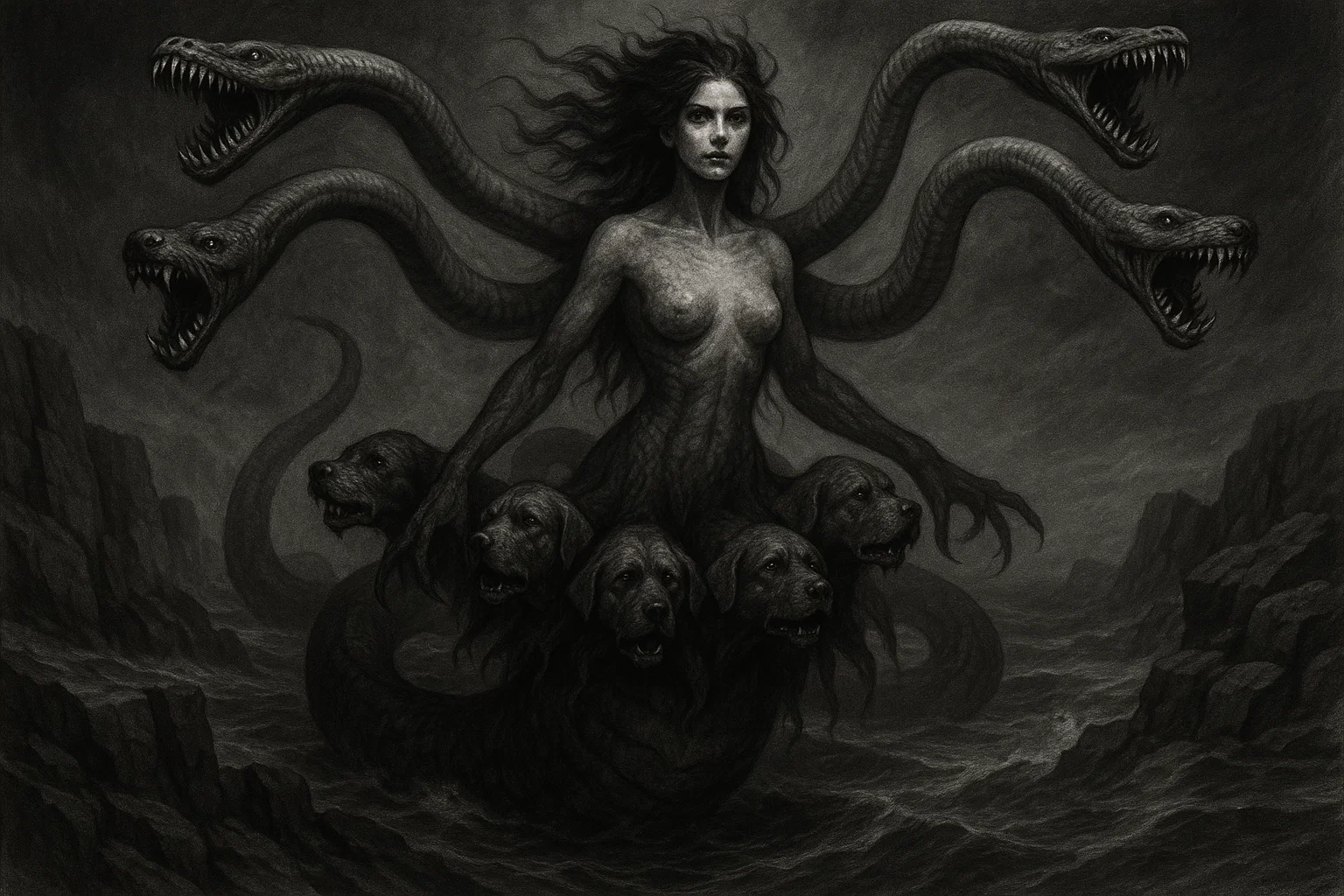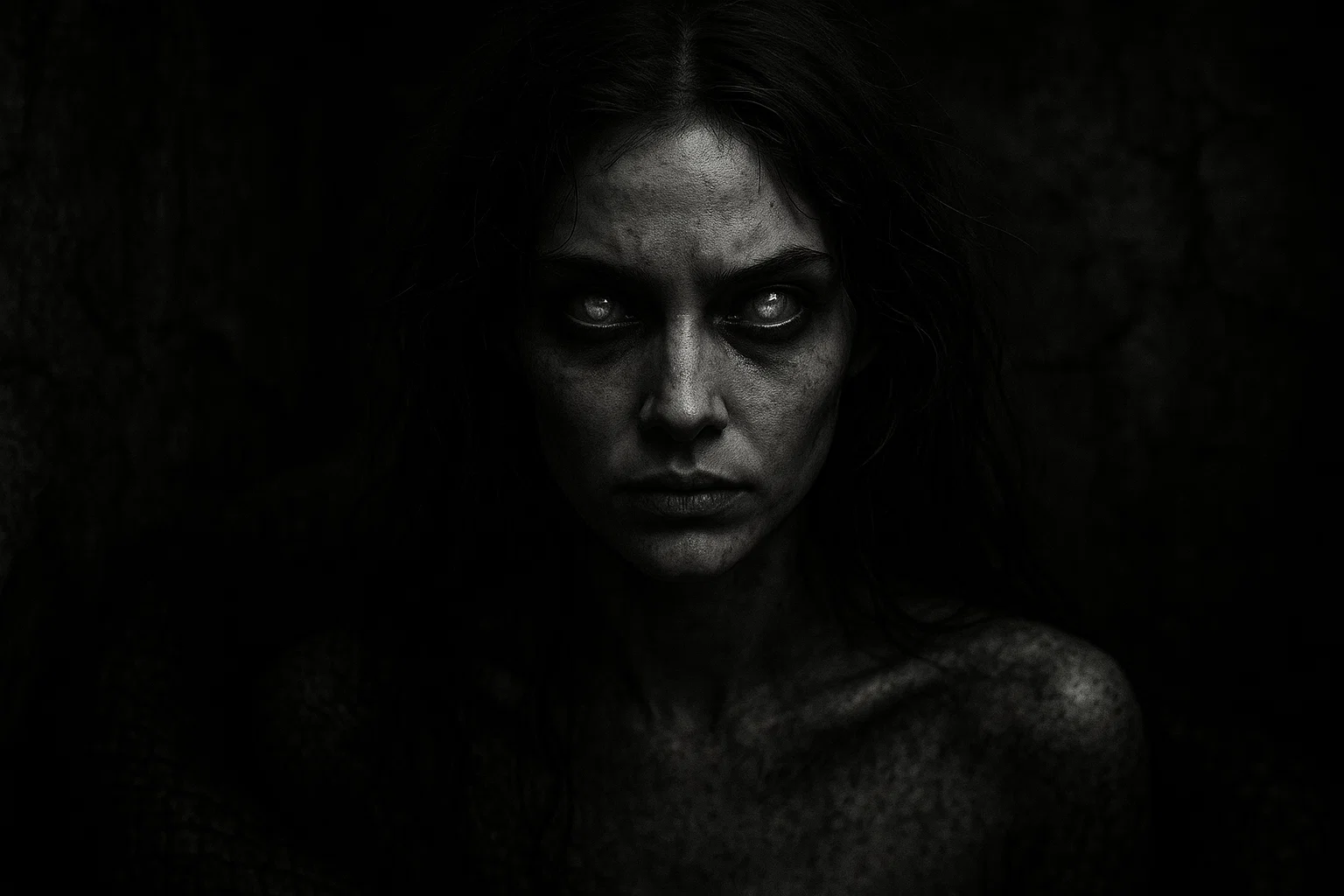In 1603, a chilling tale emerged from the rural landscapes of Gascony, France, centered on a young boy named Jean Grenier
Accused of transforming into a wolf and committing unspeakable acts of violence, Grenier’s confessions of lycanthropy and murder shocked the region.
His story, blending folklore, fear, and tragedy, offers a haunting glimpse into the superstitions of early modern Europe, making him one of history’s most enigmatic werewolf figures.
Summary
Overview
| Aspect | Details |
|---|---|
| Name | Jean Grenier |
| Born | Approximately 1589–1590 |
| Location | Saint-Antoine de Pizon, Gascony, France |
| Accusation | Lycanthropy, murder, cannibalism |
| Trial Date | May–September 1603 |
| Sentence | Life confinement in a Franciscan monastery |
| Death | Around 1610–1611 |
Who Was Jean Grenier?
Jean Grenier was born around 1589 or 1590 in the small village of Saint-Antoine de Pizon, near Coutras in Gascony. The son of Pierre Grenier, a poor day laborer, Jean grew up in a world of hardship and toil.
By age 13 or 14, he worked as a cowherd, tending livestock for local farmers, and occasionally resorted to begging to survive. Described as small and frail, Jean had striking physical features: matted red hair, pale eyes, and unusually long, black fingernails that curved like claws.
His canine teeth protruded slightly, giving him an unsettling appearance that locals later claimed resembled a wolf. Jean’s early life was marred by alleged abuse from his father, which reportedly drove him to run away from home.
This vulnerability may have shaped his later claims of supernatural transformation. Neighbors noted his solitary nature and penchant for telling wild stories, traits that would soon thrust him into infamy.
You May Also Like: Crowing Crested Cobra: A Real-Life Basilisk or Folklore Beast?
Jean Grenier’s Story
The tale of Jean Grenier begins in the rugged hills of Gascony, a region steeped in folklore and fear of the supernatural during the early 17th century.
In early 1603, a wave of terror swept through the parishes of Saint-Sever, Coutras, and Pons, as children and livestock began to vanish under mysterious circumstances. The spring air carried whispers of a monstrous wolf prowling the countryside, attacking with unnatural ferocity.
Jean Grenier, a 14-year-old cowherd, emerged as the unlikely center of this nightmare.
Early Life and Descent into Infamy
Jean’s childhood was one of poverty and neglect. Living in a modest hovel with his father, Pierre, and possibly a stepmother, Jean faced harsh discipline that reportedly included beatings.
By 1602, unable to endure his home life, he fled, wandering the countryside and taking odd jobs as a cowherd. During this time, he met Pierre de la Tilhaire, a 16-year-old boy from a nearby village, who became his companion.
The two shared tales of adventure, but Pierre introduced Jean to darker ideas, speaking of sorcery and pacts with otherworldly beings.
Jean later claimed that Pierre led him into a forest near Coutras, where they encountered a figure he called the Lord of the Forest. Described as a tall, gaunt man dressed in black, riding a coal-black horse, this entity marked Jean’s thighs with a stiletto and bestowed upon him a wolf-skin cloak and a jar of magical unguent.
The Lord instructed Jean to rub the salve on his body to transform into a wolf and forbade him from trimming his left thumbnail, which grew thick and claw-like. Jean swore allegiance to this figure, promising to hunt as a wolf in exchange for power and freedom.
The Crimes and Accusations
Jean’s confessions painted a gruesome picture of his alleged crimes. He claimed to have transformed into a wolf on multiple occasions, hunting alone or with a pack of nine other werewolves during the waning moon, particularly on Mondays, Fridays, and Saturdays.
His targets were primarily young children, whom he described as tender and easy prey, and livestock, including dogs and goats.
The following details, drawn from his confessions and witness testimonies, reveal the extent of the horror:
- March 1603, Saint-Sever: Jean confessed to attacking a three-year-old girl named Guyonne near a vineyard. He claimed to have killed her, devoured her flesh, and left her bones scattered in a ditch. Villagers later found remains matching this description, fueling panic.
- Early April 1603, Pons: A baby was snatched from its cradle in a cottage while the mother, Marie Dupont, was tending to chores outside. Jean boasted of entering the home as a wolf, seizing the infant, and consuming it near a hedgerow. The mother’s screams alerted neighbors, but no trace of the child was found.
- April 1603, Coutras: Jean admitted to attacking Marguerite Poirier, a 13-year-old shepherdess, while she tended her flock. He lunged at her in wolf form under a full moon, but she fended him off with a stout stick, sustaining only scratches. Marguerite’s testimony, describing a wolf with “human-like eyes,” became a pivotal piece of evidence.
- Late April 1603, Saint-Antoine de Pizon: Jean claimed to have killed a young boy belonging to Jean Roullier, a local farmer. He described luring the child into a copse, where he tore into him and shared the remains with another wolf. Roullier reported his son missing, and partial remains were later discovered.
- Multiple Incidents: Jean confessed to killing and eating at least six children, though he hinted at more. He also admitted to slaughtering numerous dogs, drinking their blood, and attacking goats and sheep, leaving fields littered with carcasses. Witnesses reported finding mauled livestock across the region.
The exact number of victims remains uncertain, but contemporary accounts suggest between six and twelve children may have been killed, with additional attacks on livestock.
Jean’s descriptions were vivid, including his preference for “soft flesh” and the thrill of the hunt. He spoke of running on all fours, his senses heightened, and the ecstasy of tasting blood.
You May Also Like: The Cursed Noh Mask | Horror Story
Discovery and Investigation
The crimes came to light through a combination of witness accounts and Jean’s own boasts.
In April 1603, Jeanne Gaboriant, an 18-year-old servant, overheard Jean bragging to other cowherds about his ability to become a wolf. He described eating a child’s flesh and sharing it with a companion wolf, laughing as he recounted the act.
Alarmed, Jeanne reported this to the local magistrate, Monsieur de la Gamache, who initially dismissed it as childish exaggeration but began inquiries when more reports surfaced.
Marguerite Poirier’s attack proved a turning point. Her detailed account of the wolf’s human-like features matched Jean’s appearance, particularly his red hair and claw-like nails.
Other villagers, including Guillaume de la Plante, a farmer who lost two goats, reported seeing a boy resembling Jean near attack sites.
By late May, the magistrate ordered a hunt for the perpetrator, suspecting a connection between the wolf attacks and Jean’s stories.
The community’s fear reached a fever pitch. Parents kept children indoors, and armed patrols scoured the countryside. Tales of a loup-garou (French for werewolf) spread, amplified by Gascony’s rich werewolf folklore, which told of men transforming into beasts through devilish pacts.
The authorities, pressured by grieving families, focused their suspicions on Jean, whose strange appearance and vagrant lifestyle made him an easy target.
Jean Grenier’s Werewolf Trial
On May 29, 1603, Jean Grenier was apprehended by local officials near Saint-Sever. Found wandering alone, he offered no resistance and was taken to a makeshift jail in Coutras.
His father, Pierre Grenier, was also arrested on suspicion of complicity, while Pierre de la Tilhaire, implicated as Jean’s accomplice, fled and evaded capture.
The trial that followed was a complex interplay of superstition, justice, and emerging skepticism about lycanthropy.
Capture and Interrogation
Jean’s capture was swift but chaotic. Villagers, enraged by the loss of children, nearly lynched him, but the magistrate intervened, ensuring he was held in a secure cell. Initial interrogations revealed Jean’s willingness to confess.
Without apparent coercion, he recounted his pact with the Lord of the Forest, his transformations, and his crimes. He described the wolf-skin cloak, the unguent, and the claw-like thumbnail, showing interrogators his marked thighs as proof. His candor shocked officials, who expected denials or resistance.
The interrogations were conducted by Monsieur de la Gamache and a panel of local clergy and officials.
Jean’s father, Pierre, was questioned separately and accused of teaching his son sorcery, but he vehemently denied involvement, claiming Jean was a troubled child prone to fantasies.
Pierre’s testimony painted a picture of a dysfunctional household, suggesting Jean’s claims might stem from abuse or delusion.
Despite suspicions, no evidence linked Pierre to the crimes, and he was released after a week.
Jean underwent no recorded torture, a rarity for the time, likely due to his age and voluntary confessions.
However, the psychological pressure of confinement and the clergy’s probing questions about demonic influence may have reinforced his belief in his own guilt.
He described the Lord of the Forest as a devil-like figure who tempted him with power, aligning with contemporary fears of satanic pacts.
You May Also Like: Kisaragi Station Urban Legend: Real Ghost Story or Internet Hoax?
The Trial
On June 2, 1603, Jean’s case was referred to the Higher Court of Bordeaux, a significant legal body known for handling witchcraft and sorcery cases.
The trial, presided over by President Dassis, began in mid-June and lasted until September. Prosecutors presented witness testimonies, including those of Marguerite Poirier, Jeanne Gaboriant, and Marie Dupont, alongside physical evidence like the remains of children and livestock.
Jean’s confessions formed the core of the case, detailing his alleged murders and transformations.
The prosecution argued that Jean was a loup-garou in league with the devil, citing his pact with the Lord of the Forest and his gruesome acts. They described him as a threat to the community, emphasizing the terror he had sown.
However, the defense, likely appointed by the court, introduced a novel argument: Jean’s youth and possible mental instability suggested he might not be fully responsible for his actions.
This perspective was influenced by emerging medical ideas about melancholia and delusions, though such views were controversial.
Witnesses provided chilling accounts. Marguerite Poirier recounted her attack, describing Jean’s wolf-like eyes and unnatural speed. Jeanne Gaboriant testified to his boasts, while farmers like Guillaume de la Plante linked him to livestock killings.
The court examined Jean’s physical appearance, noting his claw-like nails and protruding teeth, which some saw as evidence of lycanthropy. Others, including a local physician, suggested these traits might result from malnutrition or a medical condition.
Sentence and Confinement
On September 6, 1603, the Parliament of Bordeaux delivered its verdict. Recognizing Jean’s age and “weakness of mind,” the court spared him execution, a decision almost unheard of in werewolf trials.
Instead, he was sentenced to perpetual confinement in the Franciscan friary of Saint Michael the Archangel in Bordeaux.
The ruling stipulated that any attempt to escape would result in death by hanging or burning. This clemency reflected a growing divide between those who viewed lycanthropy as demonic and those who saw it as a mental affliction.
Jean was transferred to the monastery in late September. The friars, tasked with his care, reported that he remained convinced of his werewolf identity. He moved on all fours, growled, and refused to eat cooked food, preferring raw meat when available.
His physical condition deteriorated, with accounts describing him as “lean and gaunt,” with sunken eyes and sharp, fang-like teeth. In 1610, Pierre de Lancre, a renowned witch-hunter, visited Jean and documented his behavior in detail.
Lancre noted that Jean claimed the Lord of the Forest had visited him twice, urging him to escape and resume his wolfish rampage.
Death
Jean Grenier died in the monastery around 1610 or 1611, likely from malnutrition or illness, at the age of 20 or 21. Unlike many accused werewolves, he was not tortured or executed, but his life ended in obscurity.
Lancre’s account suggests Jean maintained his belief in his lycanthropy until the end, recounting his transformations with a mix of pride and fear. His death marked the quiet conclusion of one of France’s most sensational werewolf cases.
You May Also Like: What Was the Soviet Dog Head Experiment?
Jean Grenier vs Other Werewolves
The following table compares Jean Grenier’s case to other historical werewolf trials:
| Case | Year | Location | Details | Outcome |
|---|---|---|---|---|
| Perrenette Gandillon | 1598 | Jura, France | Accused with family of witchcraft and lycanthropy; killed a child; executed after showing a wound matching a wolf’s. | Executed |
| Peter Stubbe | 1589 | Bedburg, Germany | Confessed to 16 murders, including children and women; claimed a devil-given belt for transformation. | Tortured, beheaded, burned |
| Jacques Roulet | 1598 | Angers, France | Found near a mutilated body; confessed to killing children as a wolf; deemed insane. | Confined to asylum |
| Gilles Garnier | 1573 | Dole, France | Hermit who confessed to killing four children; used ointment to transform; burned alive. | Executed |
| Michel Verdun & Pierre Burgot | 1521 | Poligny, France | Confessed to murdering children and livestock; claimed devilish pact; tortured and burned. | Executed |
| Johan Martensen | 1595 | Utrecht, Netherlands | Part of a werewolf pack; confessed to devilish transformation; executed. | Executed |
| Hans the Werewolf | 1651 | Estonia | Claimed involuntary lycanthropy; no murders but executed for sorcery. | Executed |
| The Werewolf of Châlons | 1598 | Châlons, France | Tailor who lured and killed dozens; burned without trial. | Executed |
| Thiess of Livonia | 1692 | Livonia, Latvia | Claimed to be a benevolent werewolf fighting witches; flogged and banished. | Banished |
| Manuel Blanco Romasanta | 1852 | Galicia, Spain | Confessed to 13 murders; claimed lycanthropy; convicted of nine; died in prison. | Imprisoned |
Jean Grenier’s case shares common themes with other werewolf trials, such as confessions of devilish pacts (Peter Stubbe, Gilles Garnier) and gruesome murders (Jacques Roulet, The Werewolf of Châlons).
The motif of a supernatural transformation, often involving a belt, ointment, or skin, appears in many cases, reflecting widespread folklore. However, Jean’s youth and the court’s leniency set his case apart.
Unlike Stubbe or Garnier, who faced brutal executions, Jean was spared, suggesting a judicial shift toward viewing lycanthropy as a delusion rather than a demonic act.
His confinement allowed for detailed observations, as recorded by Pierre de Lancre, providing a richer account than many other cases. The contrast with Thiess of Livonia, who claimed benevolence, further highlights the diversity of werewolf narratives.
Was Jean Grenier a Real Werewolf?
The case of Jean Grenier is primarily documented in Pierre de Lancre’s Tableau de l’inconstance des mauvais anges et démons (1612), a detailed treatise on witchcraft and demonology.
Lancre, a Bordeaux magistrate and witch-hunter, visited Jean in 1610 and provided a vivid account of his appearance and behavior, describing him as a “wild creature” who moved like a beast.
Another contemporary source, La conférence du droict françois avec le droict romain (1610), briefly mentions the trial, confirming its occurrence but offering fewer details.
Later works, such as Sabine Baring-Gould’s The Book of Werewolves (1865), draw heavily on Lancre’s account, though Baring-Gould introduces some embellishments, such as dramatized dialogue.
Primary trial records from the Parliament of Bordeaux have not survived, likely destroyed during the French Revolution or earlier conflicts.
However, Lancre’s status as a legal official lends credibility to his narrative, though his bias toward demonology must be considered.
He interpreted Jean’s claims as evidence of satanic influence, a common lens for the time.
Other records, such as parish registers from Saint-Sever and Coutras, mention missing children in 1603, aligning with Jean’s confessions, but they do not explicitly link him to the deaths.
The accuracy of Jean’s story is debated. His confessions align with Gascony’s werewolf folklore, which included tales of loup-garous making pacts with the devil.
This suggests he may have internalized these stories, possibly due to a mental condition like clinical lycanthropy, a psychiatric disorder where individuals believe they transform into animals.
Modern scholars, drawing on medical history, propose Jean may have suffered from schizophrenia, mania, or a delusional disorder, exacerbated by malnutrition or abuse.
His physical traits—protruding teeth, long nails, and gaunt appearance—could result from congenital conditions, poor diet, or diseases like porphyria, which can cause photosensitivity and skin changes.
Skeptics argue Jean’s confessions were coerced, though no evidence of torture exists.
The court’s leniency and the absence of physical proof (e.g., the wolf-skin or unguent) suggest some officials doubted his claims. Conversely, the discovery of remains and witness testimonies lend partial credence to his crimes, though the exact number of victims remains unverified.
The Lord of the Forest may have been a fictional or hallucinatory figure, possibly inspired by Pierre de la Tilhaire or local legends.
You May Also Like: Was the Infamous Vseslav of Polotsk a Werewolf?
Conclusion
The saga of Jean Grenier weaves a complex tapestry of folklore, fear, and human tragedy. His confessions, whether born of delusion, coercion, or truth, reflect the anxieties of a society grappling with the unknown.
The lenient sentence and detailed accounts of his confinement offer a rare window into the evolving understanding of justice and mental health in the 17th century.
Whether a true werewolf, a troubled youth, or a scapegoat for a terrified community, Jean Grenier’s story endures as a haunting reminder of the power of belief and the fragility of truth.







